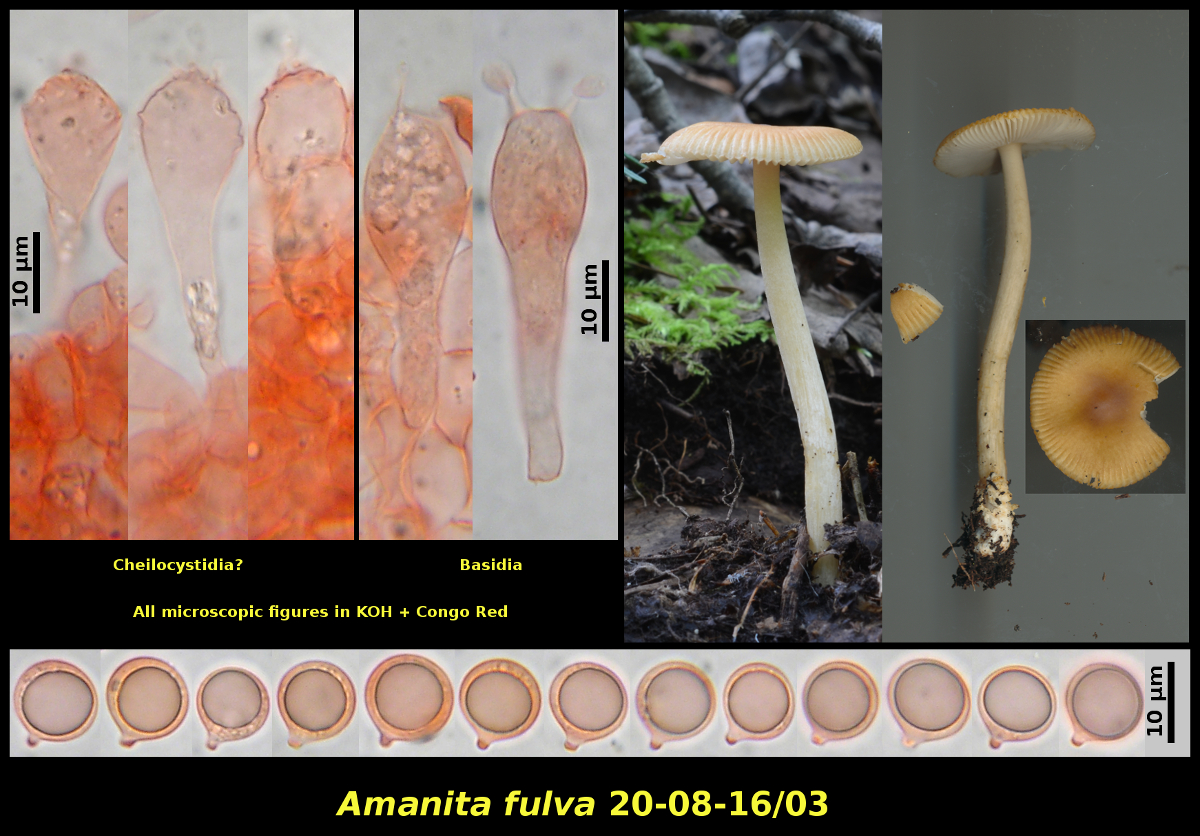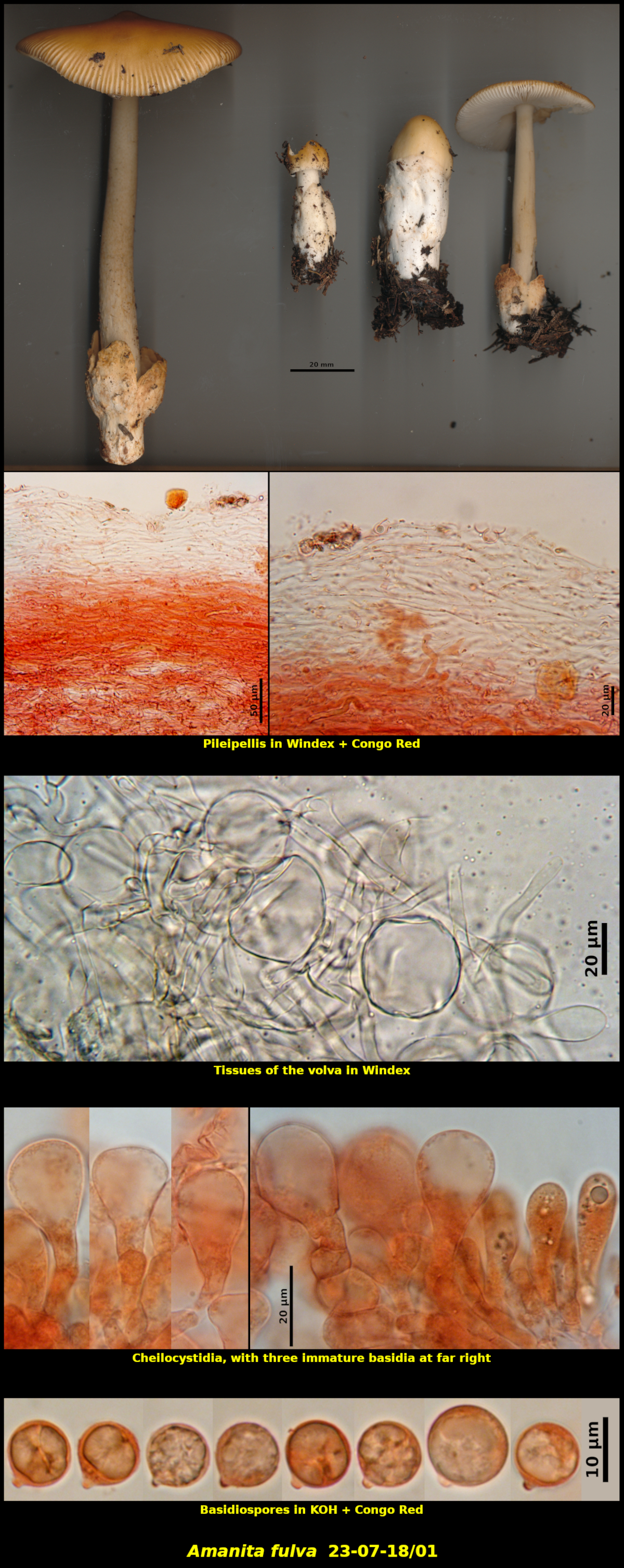Fleshy Fungi of New Brunswick >>
Amanita fulva
Amanita fulva Fr.


Two collections:
-
1. Solitary in leaf litter in association with Abies balsamea, Betula papyrifera and Populus tremuloides, Nepisiguit Protected Natural Area, New Brunswick (20-08-16/03).
-
Pileus plano-convex, with a very low umbo, markedly corrugate-striate at the margin, reddish brown (HSV20:40:50) at the centre, orange (HSV40:60:100) elsewhere, glabrous, dry, 27 mm in diameter. Stipe equal down to the slightly swollen base, very pale orange white, glabrous, dry, 73 X 3 mm. Lamellae white, close, free, not marginate. Annulus lacking. Volva white, sac-like, adhering to the stipe. Flesh white, lacking a distinctive odour
Basidiospores spherical, smooth, inamyloid, 9.1-10.5 X 8.6-10.8 μm, Q = 0.95-1.09 (average[13]: 9.7 x 9.6 μm, Q = 1.01).
-
-
Pileus conic-turbinate at first, expanding to broadly plano-convex at maturity, with a low but prominent rounded umbo, markedly corrugate-striate in the marginal 0-12 mm, moist, finely white-frosted-pruinose when first emerging from the universal veil, later glabrous, orange brown (HSV35:60:50-70) at centre, (HSV35:60-70:90) elsewhere, slightly paler at first, 48-76 mm in diameter. Stipe tapering up slightly, rather brittle, hollow to slightly stuffed, nearly white at first, later very pale orange yellow (HSV45:10-15:100), very finely fibrillose, with fibrillose elements becoming obscurely pale reddish orange, dry, 90-145 X 5-7 mm. Lamellae white to very slightly yellowish white, close to crowded, free, not marginate. Annulus lacking. Volva conspicuous, adherent to the base of the stipe but otherwise saccate and clearly distinct from the stipe, rather thick and persistent, white at first but later taking on orange red colours (HSV25:60:80-90). Flesh white, with a nondescript mushroom odour.
Basidiospores white in spore print, subspherical to spherical, inamyloid, with a prominent apiculus, 9.5-12.6 x 9.3-12.4 μm, Q = 1.00-1.07 (average[30]: 10.2 x 10.1 μm, Q = 1.02). Cheilocystidia forming a continuous sterile margin, clavate, 34-53 x 11.2-23.6 μm. Pileipellis a thick ixocutis above a compact subcutis. Basidia clavate, 4-spored. Clamp connections lacking throughout.
2. Gregarious (4)in soil among mosses under Abies balsamea, Picea mariana and Larix laricina in a perhumid coastal forest, Little Lepreau, New Brunswick (23-07-18/01).
According to the highly authoritative Amanita website maintained by Dr. Rodham E. Tulloss, A. fulva is a European species mostly known in North America from collections made in Newfoundland and Labrador. Dr. Tulloss has yet to name most North American material, but does not consider them to be A. fulva. In spite of this the two collections here have been retained in A. fulva due to their great similarity to European descriptions and because the forests in New Brunswick can be remarkably similar to those in Newfoundland. A final decision awaits DNA sequencing.
Amanita fulva is just one in a confusing array of Amanita species in subgenus Amanita, section Vaginatae. It is recognized by its honey-coloured pileus and sack-like volva that turns orange brown as it dries.
Photos: D. Malloch (20-08-16/03, 23-07-18/01).